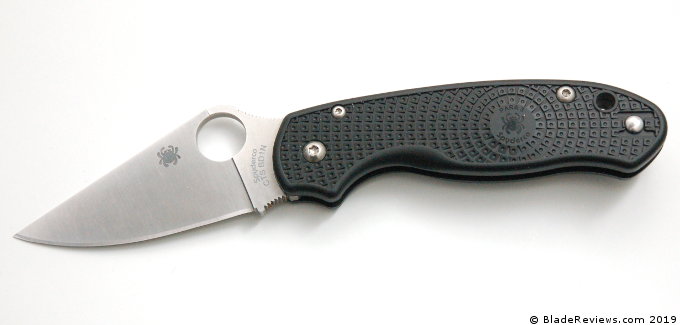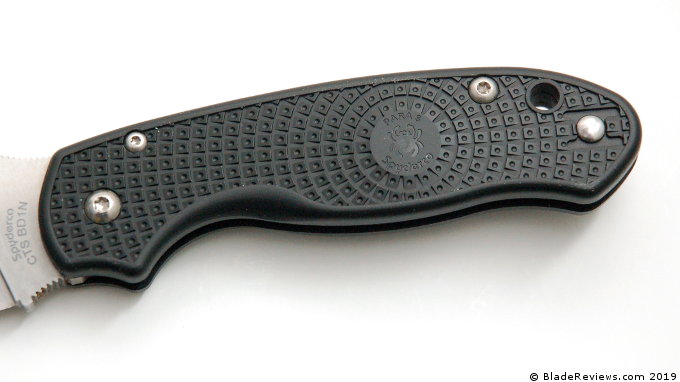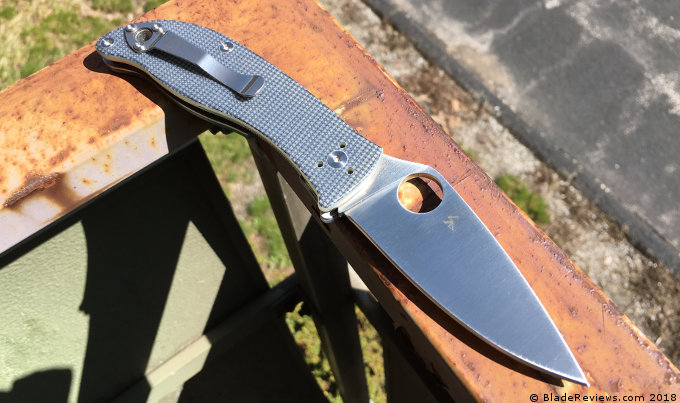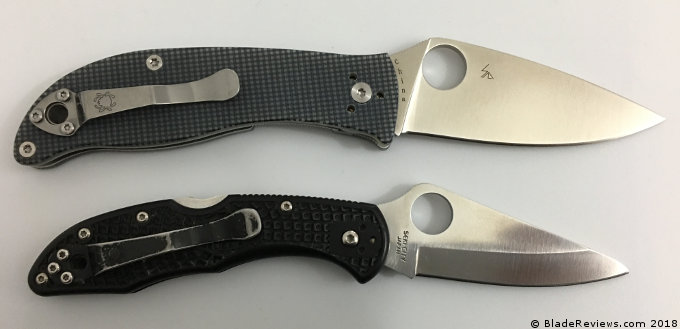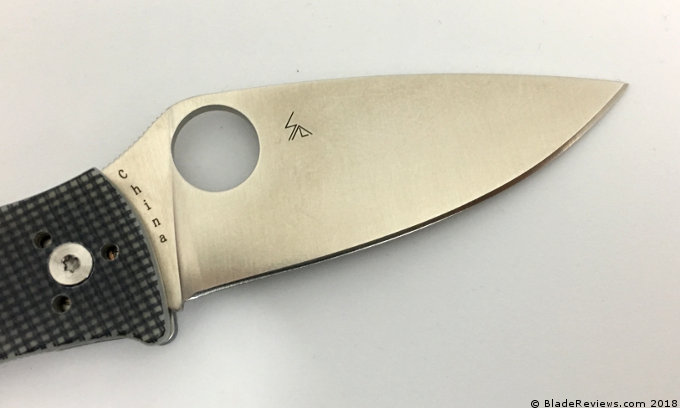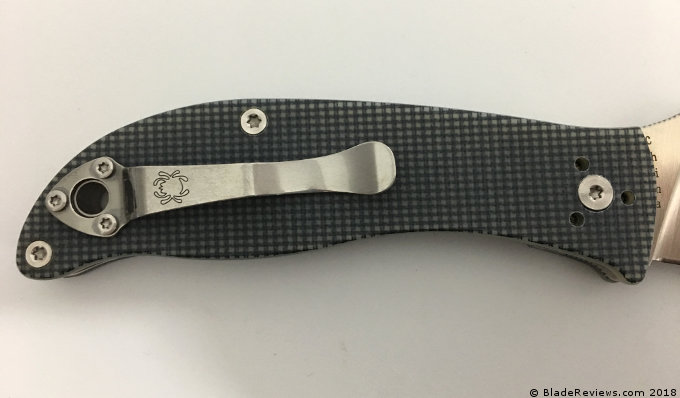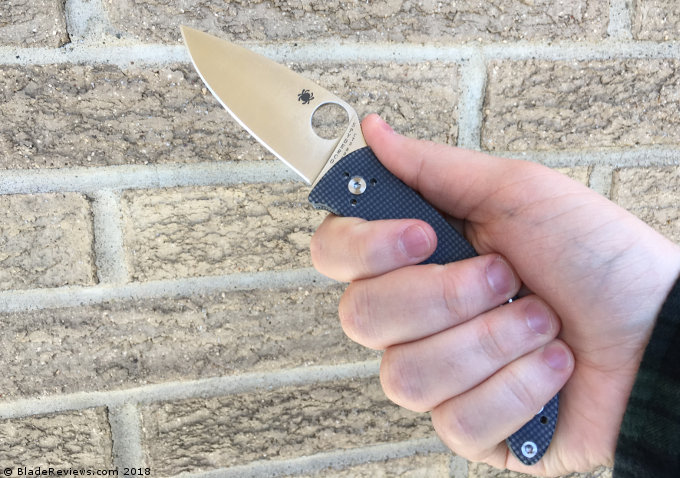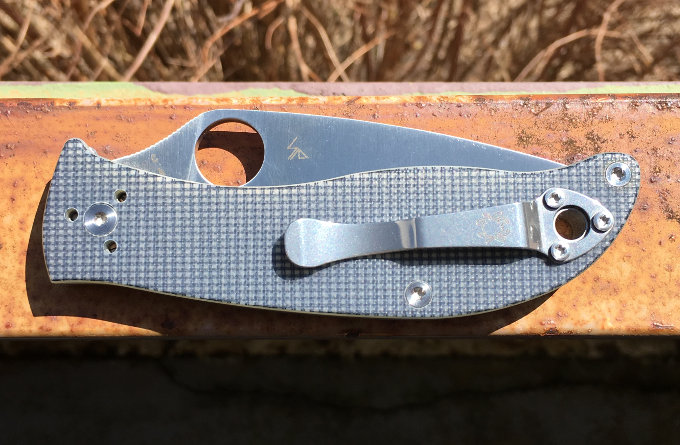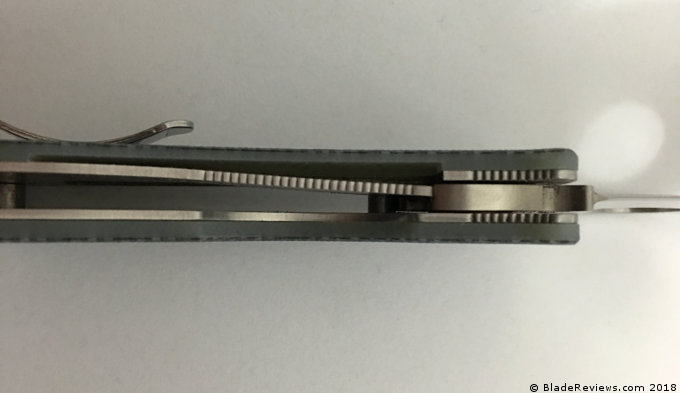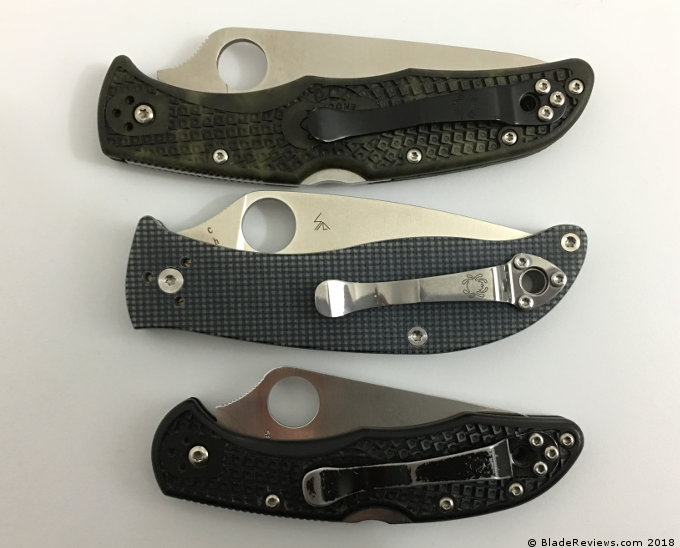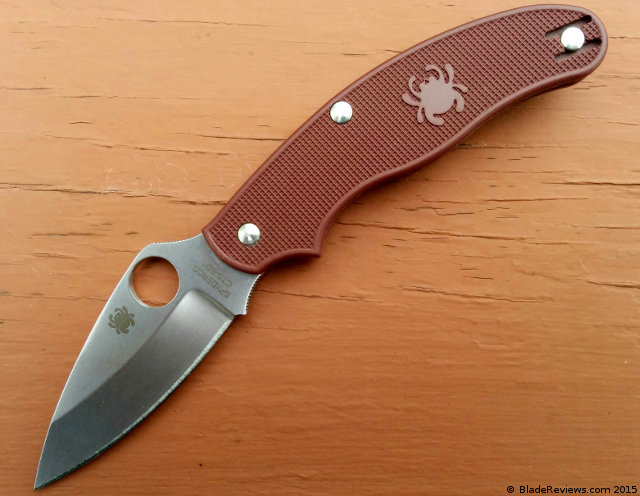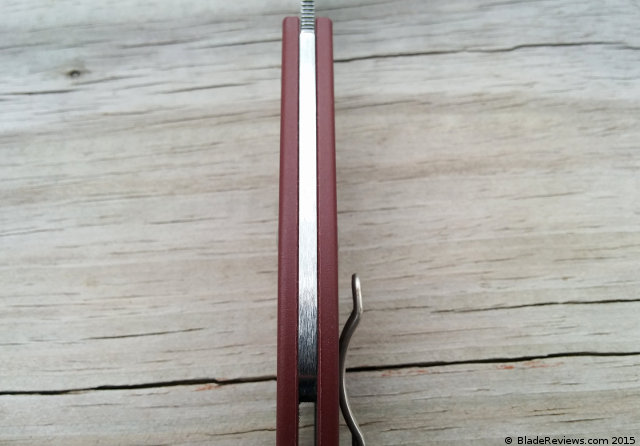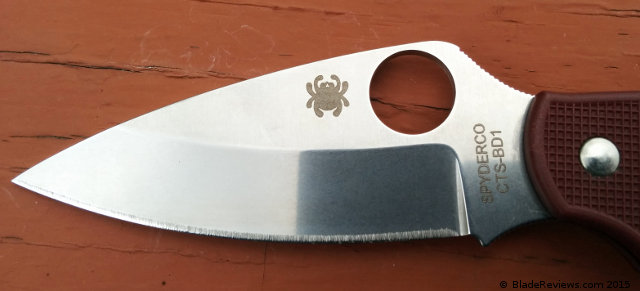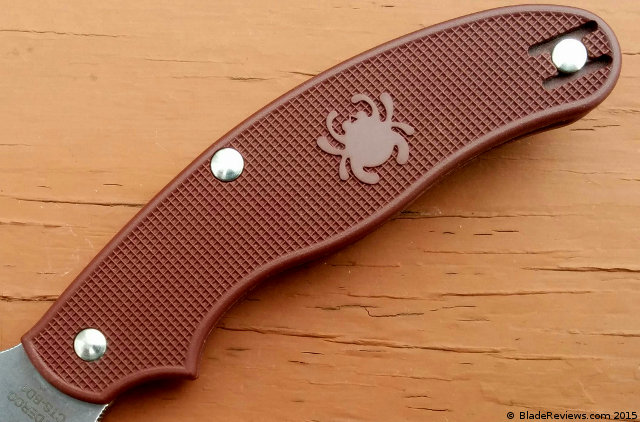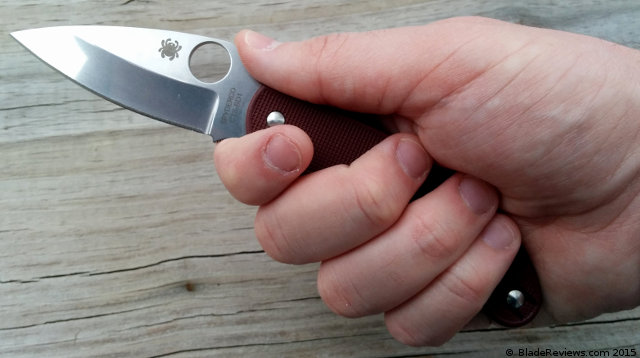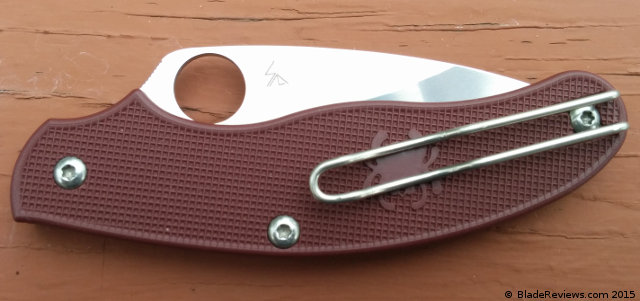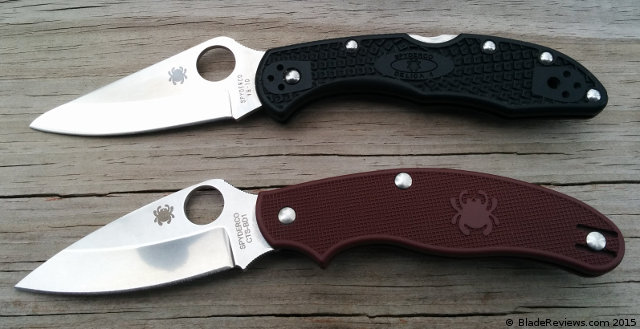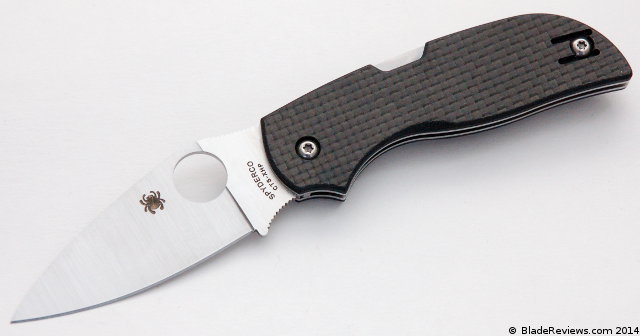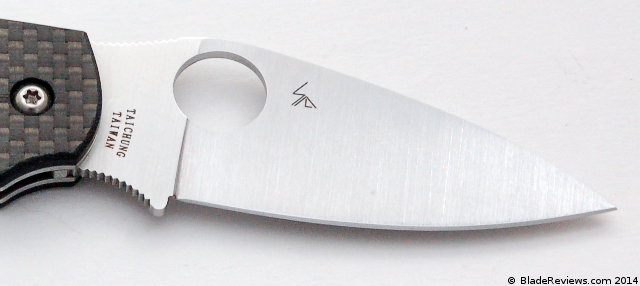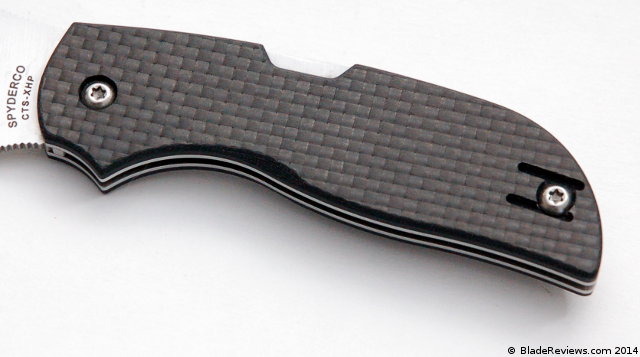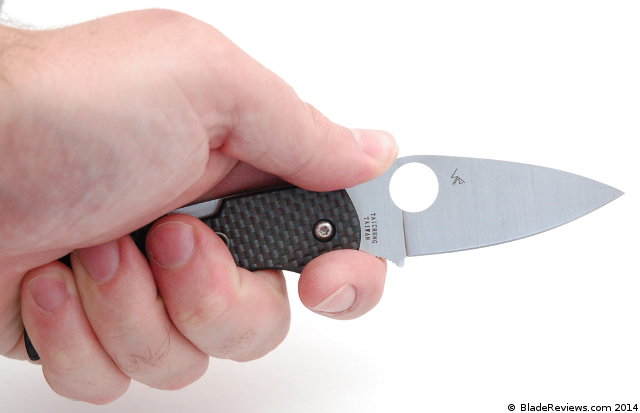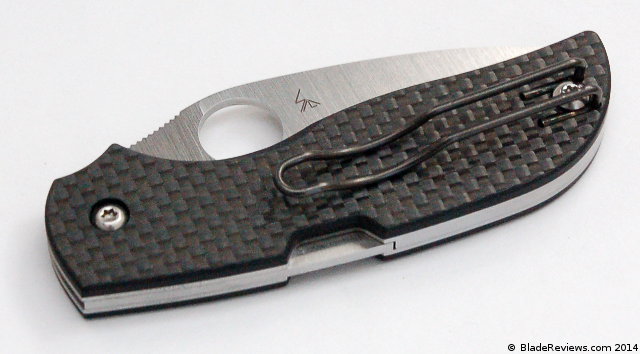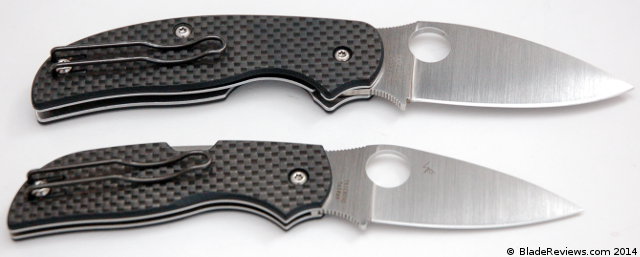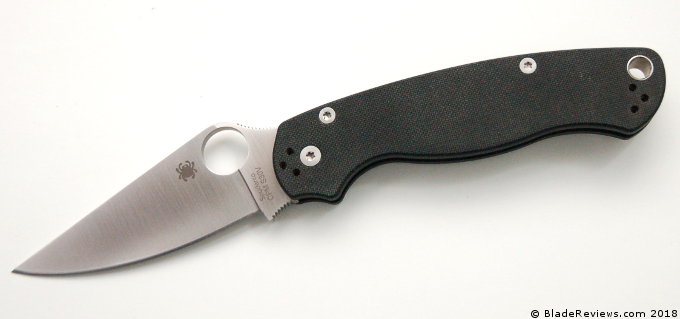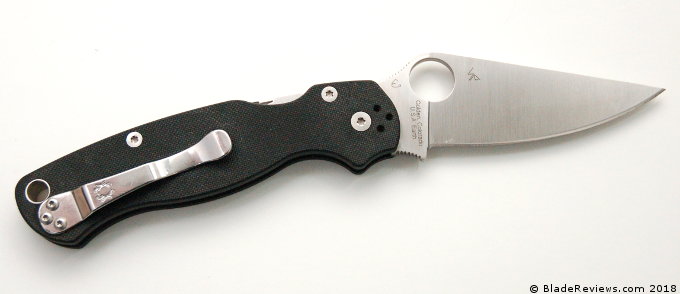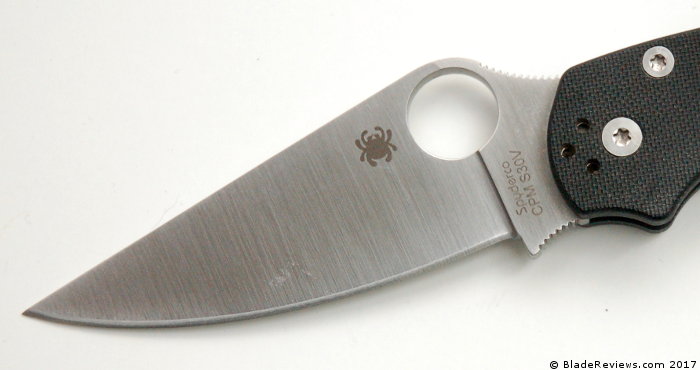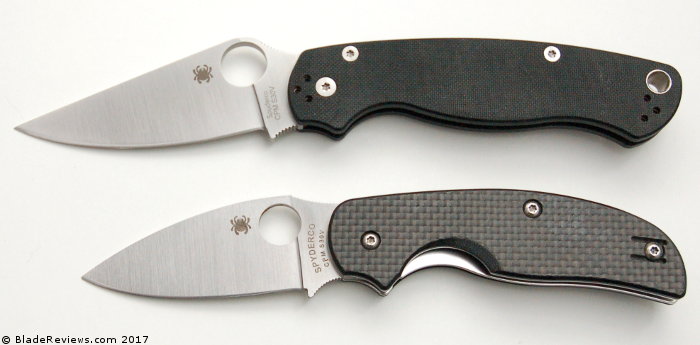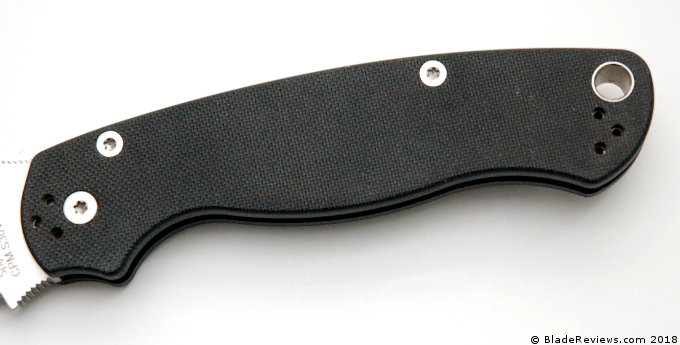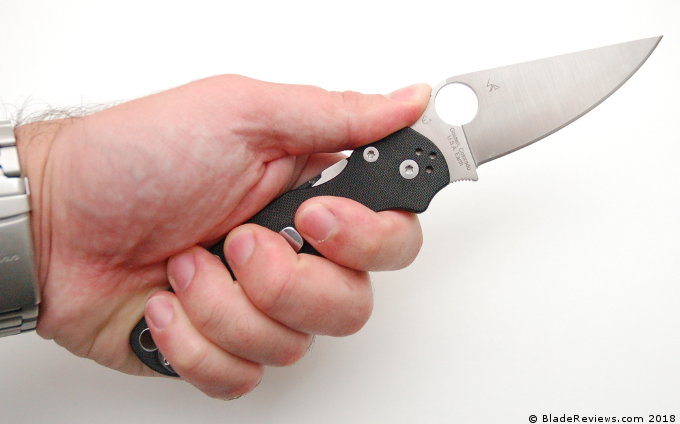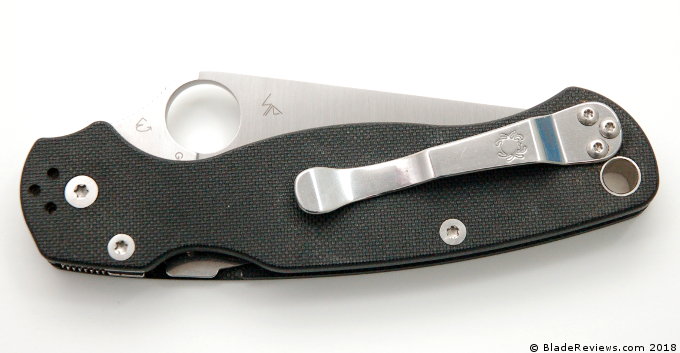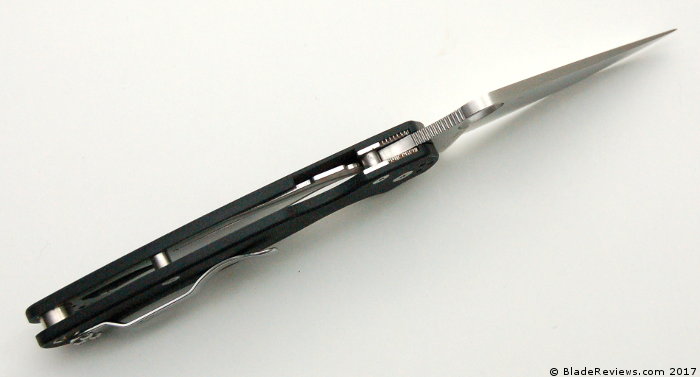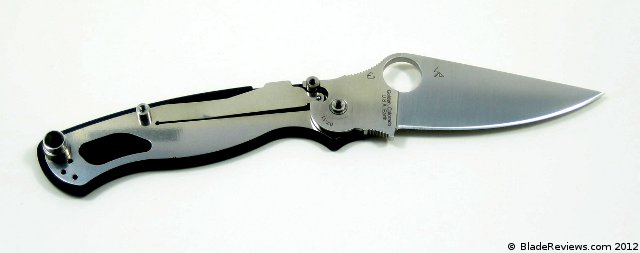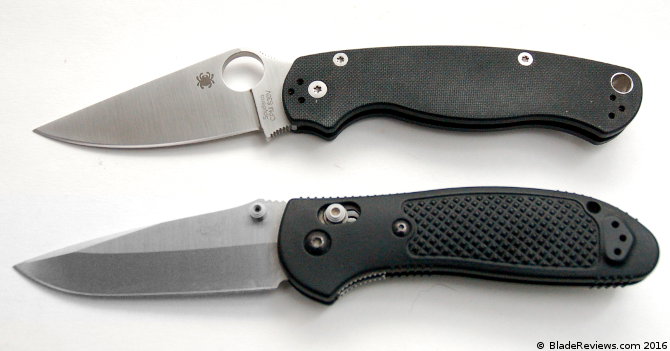The Spyderco Paramilitary 2 may be the most popular knife in the last 20 years. It’s received near universal acclaim, and is revered by knife collectors and users alike. So when Spyderco released the Para 3 a couple years ago it was a big deal. Ben reviewed the Para 3, and he did a great job.
The Para 3 had some big shoes to fill with the Paramilitary 2. It may have come up a little short. Others seem to share Ben’s opinion. The Para 3 isn’t quite as loved as the original Para 2 for some reason, but it has still developed a loyal following and already boasts a number of sprint runs.
I never bought the Para 3, but felt like I should have. So when then the Para 3 Lightweight came out I bought one on the spot from GP Knives.
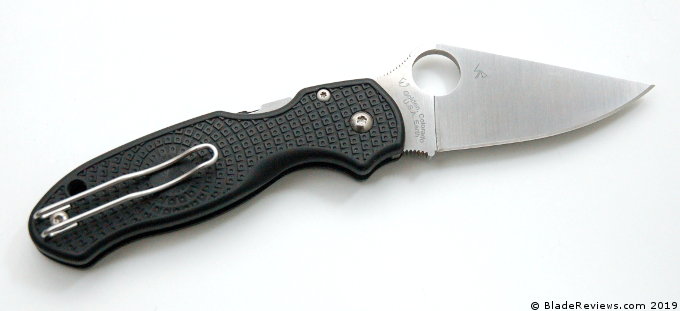
As a short aside, GP Knives is smaller than my usual preferred retailer, BladeHQ, but they have the knife in stock, offer fast shipping, and have a great Twitter account that has convinced me to make more than one impulse purchase.
I figured the Para 3 LW would allow me to gain some perspective on the Para 3, but also provide a knife that I could review on here. I should also note that this knife is also referred to as the Para 3 FRN.
General Dimensions and Blade Details
The Para 3 Lightweight has an overall length of 7.27″, a 3.00″ blade, weighs 2.4 ounces, and is made in Golden Colorado, in the United States of America, here on planet Earth. This is a Sal Glesser design. For those that may not know, Sal is the founder of Spyderco.
The knife feels exceedingly light for its size. I let my dad handle it a couple weekends ago and his comment was that it was “very lightweight.” You can always count on BladeReviews for the deep insights.
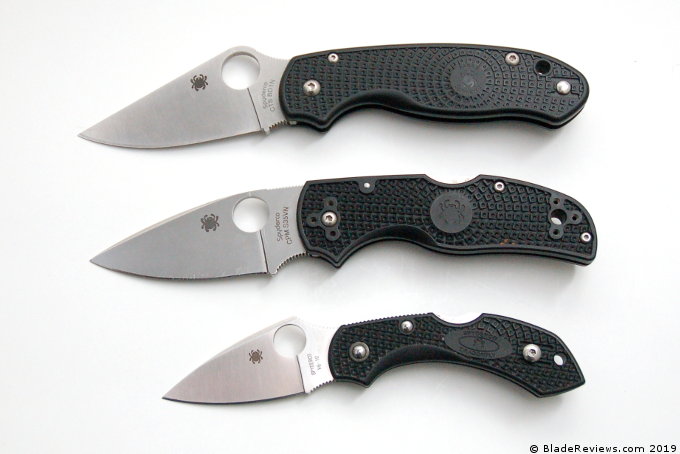
I’m no stranger to Spyderco’s lightweight designs. The Native 5 LW and Dragonfly 2 in FRN remain stalwarts in my collection, and at the top of my Best EDC Knives list.
Spyderco’s lightweight versions have gained traction for good reason. You get the same cutting performance of their heavier knives at a fraction of the weight. While the knives won’t be quite as strong, they are still serviceable for normal use. They are great choices for every day carry.
The blade on our Para 3 FRN is a classic Spyderco shape. It’s a shrunken down Para 2 blade. It’s taller and stubbier. It’s broad with a full flat grind. No swedge, no sharpening choil. It’s simple, but it works. The low tip is sharp and good for piercing. The low belly is fine for slicing. This may not be the best skinning knife, but I’m not a hunter.
Here’s a size comparison with my Para 2:
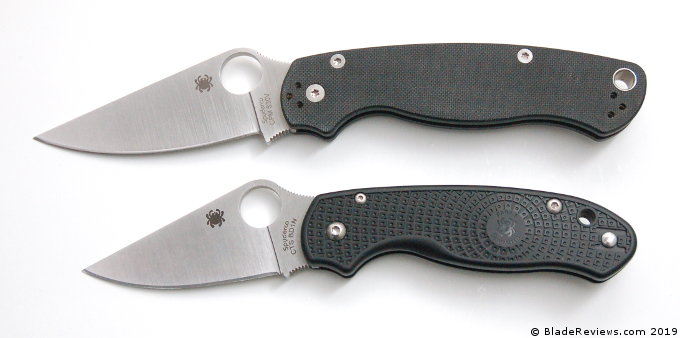
Spyderco selected CTS BD1N for the blade steel. I was a little surprised by this choice, figuring they would have went with S35VN. But they decided on CTS BD1N. This is a less expensive blade steel, which I’m sure helps keep this knife retail for less than $100. In my experience it’s a very easy steel to sharpen. It takes an edge quickly on my Golden Stone. The blade is capable of getting razor sharp and it tracks through cardboard without a problem. No issues with rust or corrosion so far.
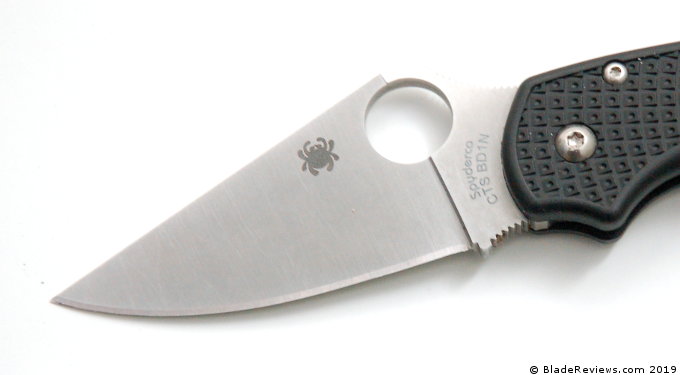
I’ve used my Para 3 Lightweight extensively as a daily carry knife. This means I’ve opened lots of mail with it, broken down plenty of boxes, sliced and diced fruit while watching the last season of Game Of Thrones, and accomplished a myriad of small chores that require a sharp edge. I can’t complain about the blade shape or the blade steel. The full flat grind provides good slicing performance. The edge retention is decent.
When it’s time to sharpen up the knife it comes back quickly. It’s one of those fine grained steels that you can feel get sharper on the stone. Personally, I like knives that are easy to sharpen. I maintain my edges regularly and would rather touch up often then need to spend a half hour bringing back the edge on a knife with stubborn steel.
Handle, Ergonomics, and Pocket Clip
This section is presumably why you are checking out the review. The handle of the Para 3 Lightweight is made of fiberglass reinforced nylon (FRN). That’s a high density plastic. There are no metal liners in the knife. The compression lock is just a small strip of steel. There are 2 substantial FRN standoffs near the tail of the handle, and the lanyard hole is reinforced, presumably to provide some structural rigidity to the handle.
Some may be skeptical of a plastic handled knife, but Spyderco has proven themselves before with their LW series, and I think it works here with the Para 3 as well. The handle is secure. There is a tiny bit of flex in the FRN if you try to squeeze the handles together, but it’s not bad. Everything appears to be well engineered.
“Engineering” is a term that has only recently come in vogue within the knife industry, but with a knife like this you can’t just slap it together. It takes a good deal of engineering to pull something like this Para 3 lightweight off. This becomes especially apparent when you take the knife apart (more on that later).
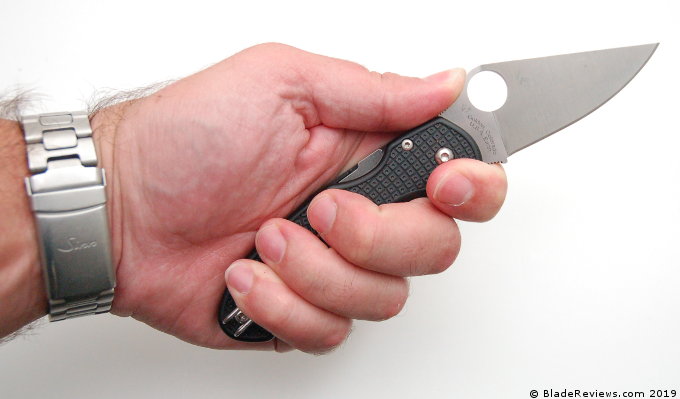
A major concern when you try to shrink down a knife, is how that will effect the ergonomics. The handle of the Para 3 is almost half an inch shorter than the Para 2. That’s significant for a knife, and could result in some ergonomic compromises.
All in all, I think the Para 3 is pretty good ergonomically. There is still enough room for a full 4 finger grip without using the forward finger choil, and the heavily contoured FRN feels good in hand. There is plenty of traction thanks to sharp jimping, and Spyderco’s bi-directional textured handle. This one won’t slip out of your hand in the shower.
However, there are a couple small ergonomic issues. First of all, I’m not a huge fan on the small “beak” on the tail end of the handle. My pinky lands directly on it. While the beak isn’t sharp, all things equal I’d rather not have it right there. Or at least see it smoothed out. If you have smaller hands I think you will be fine, and it may actually help you grip the knife better. For larger hands the beak gets in the way. Also, there are some slightly sharp edges on the inside of the FRN, especially up by the compression lock. Nothing that will cut you, but it’s noticeable and I want to point it out. It could easily be smoothed over with emery paper if it bothered you. I don’t notice it in use, more when I’m examining the knife.
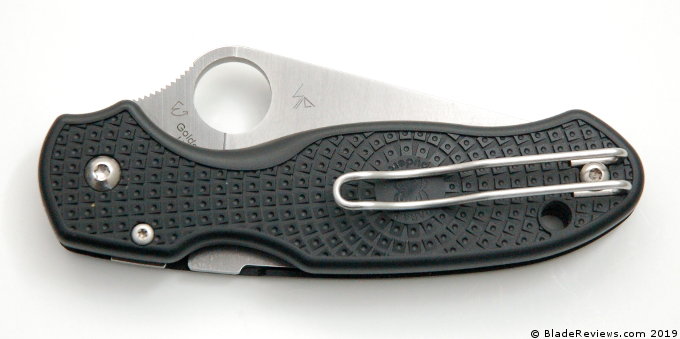
All said I think the ergos are pretty good on the Para 3 LW. I’d lose the beak and maybe soften some edges, but beyond that there is little to complain about.
The Para 3 LW is equipped with the Spyderco wire clip that can be mounted for ambidextrous tip up carry. It’s a deep carry clip that has been positioned so that it buries 99% of the knife in your pocket. It’s a simple and elegant design, and continues to be a personal favorite. I’ve owned the Dragonfly 2 for almost 10 years now. It has a similar type of clip and have never had an issue with it.
I also view this clip as an upgrade over the standard spoon style clip found on the Para 2 and the original Para 3. It’s deeper carry and more discreet. They should implement this clip on the entire Para family.
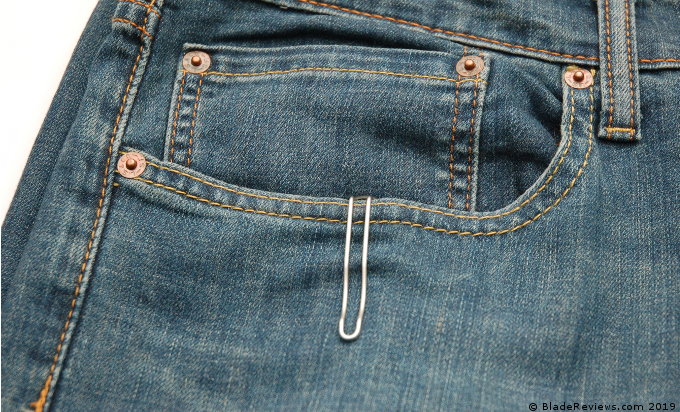
The knife carries wonderfully. At 2.4 ounces, you don’t feel it in the pocket. It disappears and you quickly forget about it. It’s a great choice for daily carry for this reason. It stays out of the way until you need it. Can’t say enough good things about how this knife carries.
Deployment and Lockup
The Para 3 makes use of a 13mm thumb hole. This is the same size as the Para 2. This oversized thumb hole is easy to engage with your thumb or middle finger, and the blade flicks out easily. This begged the question of whether there were washers inside the knife. I peered inside and couldn’t see anything, so I took the knife apart with my WiHa drivers. Here is what I found:
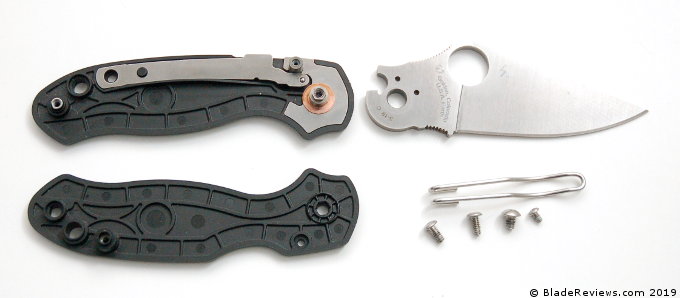
Oddly enough there is only one phosphor bronze washer on the lock side over a steel plate. On the other side it’s just raised plastic. This could be a turn off for some, but I wasn’t too surprised given the construction of my Native 5 LW.
For lockup we have a new version of the tried and true compression lock. In the past, the compression lock has been integrated into the liner of the knife. Here, it’s a small stand alone piece. Here are a couple shots with the lock engaged and disengaged:
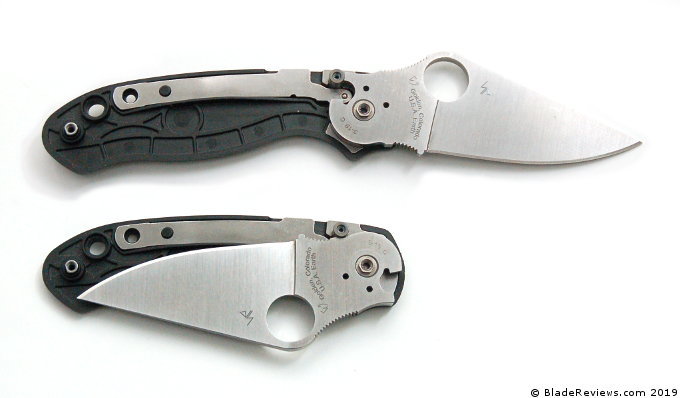
I think they successfully integrated the compression lock into the knife. It feels just as good as my Para 2. There is no lock stick. It’s easy to disengage, and provides the strength and convenience we have come to appreciate from the compression lock. No blade play or wiggle. No complaints.
Some may find the lack of metal inside this knife concerning. They want something more substantial. I haven’t noticed an issue. Again, the knife feels solid. I think with normal use you will be fine. I probably won’t take this one hog hunting, but it did a great job opening a bag of coffee the other morning.
Here is a shot of the Para 3 LW compared with my Spyderco Sage 5:
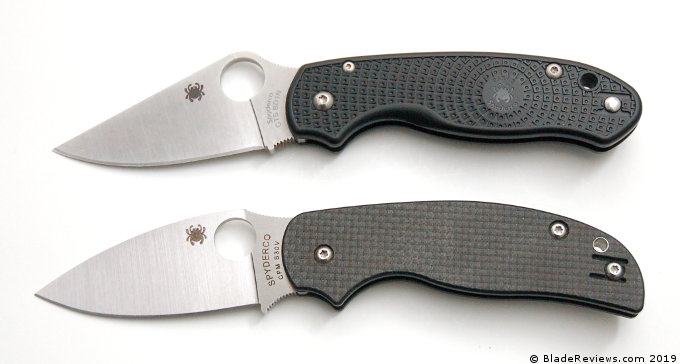
Blade centering is perfect on my piece. Even after disassembling the knife everything came back together smoothly. Again, I think it speaks to the engineering put into this knife. Gone are the days of guesswork hoping that tolerances are good enough that the blade will center. This thing just plain works.
Spyderco Para 3 Lightweight vs. Benchmade Bugout
Another interesting comparison is with the Benchmade Bugout. Both are ultralight full size folders. Both are made in the USA. At the time of writing this article the Bugout costs about $30 more. Here’s a size comparison:
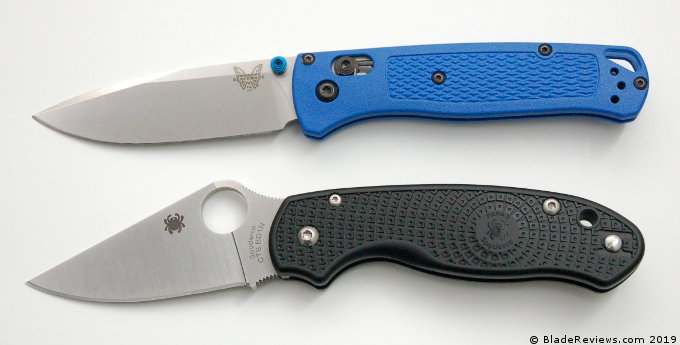
As you can see they compare favorably in terms of overall length and handle length. The Bugout has substantially more cutting edge thanks to the lack of a finger choil, and it’s significantly lighter at 1.8 ounces vs. 2.4.
Personally, I like the Bugout a little more. I like the blue accents, Benchmade’s heat treat on the S30V blade, the ultra thin blade grind, the roomier handle, and the axis lock. But averaged out for cost I’d say they are close. Both are nice knives. Buy what you like.
Spyderco Para 3 Lightweight Review – Final Thoughts
Objectively I think the Para 3 Lightweight is another winner from Spyderco. It’s lightweight, highly functional, and embodies many of things we love about Spyderco knives. Plus it’s made in the USA and retails for under $100. In an era of expensive overseas made knives, the Para 3 LW is a compelling proposition. Personally, I see no reason to have the original G-10 version over this lightweight version, unless you want to collect them. This lightweight version will cut just as well. Maybe you sacrifice a tiny bit of strength, but unless you plan on batoning with your folder I don’t think there is much cause to be concerned.
If I had to some nit picking, it would mostly be directed to the small hump at the base of the handle near the pommel. I found that got in the way a little. Not enough to develop a hotspot, or make the knife unusable, but I didn’t care for it. Also, there are some slightly sharp edges on the insides of the handle. Nothing crazy, but again, I want to point it out. Some might gripe that the knife is “too” lightweight with only a single washer, and very little metal inside the hande. I’d suggest buying a regular Para 3 in that case.
Beyond that, a sharpening choil wouldn’t hurt, but you don’t see those on may Spydercos with this leaf blade shape. I can sharpen the entire edge if I use a rod style sharpener like the Sharpmaker. Spyderco has spent a lot of time considering their designs, and the Para 3 LW is well considered. I find it hard to fault the knife in any major way.
But I will take this moment to talk about the Spyderco line in general. They have so many good knives. Would I pick this one over the Sage 5 or the Native 5 LW or the Chaparral FRN? Frankly I don’t know. Every year Spyderco’s catalog grows more crowded. Some are cool collaborations for collectors that probably will come and go, but others like this Para 3 LW will be permanent editions.
For example, you have the Endura, the Delica, and now the Endela. And that’s in addition to the Stretch, Dragonfly 2, and everything else in that family of knives. It’s a lot to consider. It has become cliche to say we are “spoiled for choice”, but we really are. There’s a lot of good stuff out there. How do we decide? The Para 3 doesn’t make it any easier. It’s another great knife.
Personally, I think I like it more than my regular Para 2. The Para 2 will never leave my collection, but I like how the Para 3 FRN has a smaller, lighter footprint, and I also like the deep carry clip. The ergonomics are a little better on the Para 2, but unless I’ve got a big job ahead of me I’d rather have the smaller knife. The Para 2 remains a beast and will be a great choice for bigger jobs or those days when I want a meatier knife, but for most days I think the Para 3 LW will fit the bill.
- The New EDC: The Para 3 distills all the features of that best-in-class folding knife into a more compact, carry-friendly package. It proudly features all the key qualities of the Para Military 2 with a full-flat-ground CTS BD1N Steel Blade.
- Superior Quality: Machined from premium CTS BD1N, a nitrogen-enriched high-carbon chromium steel, the Para 3 offers superior balance, edge retention, and low-friction cutting performance.
- Pocket-Friendly: It features a lightweight, open-backed construction style and its Stainless Steel liners are nested into the FRN Handle. This reduces handle thickness and provides excellent support for the knife's Compression Lock.
- Reliable High Performance: The Para 3 traces its history all the way back 2004 to the introduction of the Para Military design. It offers the same proven reliability and cutting performance, but in a more compact, easy-to-carry design.
- Easy-to-Use Lock: Located in the spine of the handle, the Compression Lock's high-strength mechanism locks the blade securely open during use, yet allows it to be closed easily and safely with only one hand.
I recommend purchasing the Paramilitary 3 at Amazon, BladeHQ, or GP Knives. Purchasing anything through any of the links on this site helps support BladeReviews, and keep this review train running. As always, any and all support is greatly appreciated.
